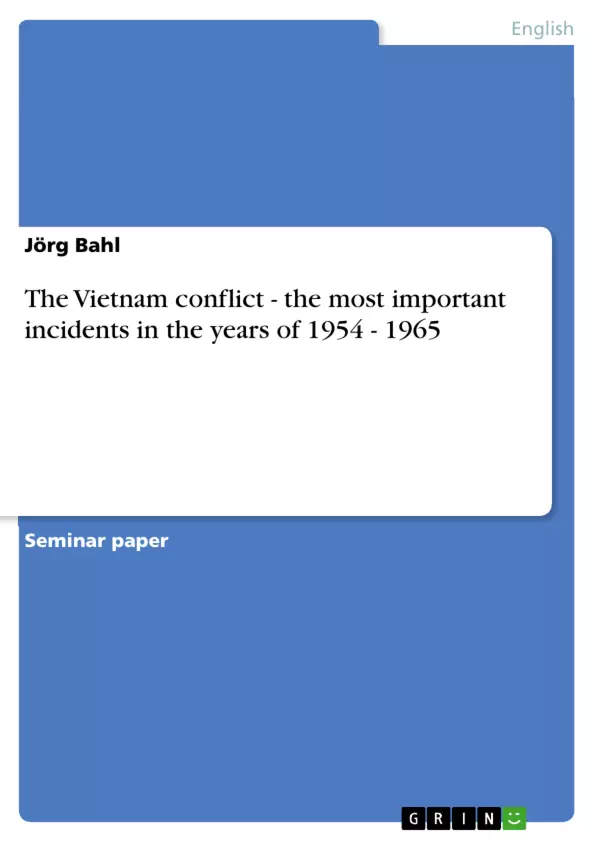"Vietnam, Vietnam....There are no sure answers," the veteran Southeast Asian correspondent Robert Shaplen wrote during an especially perplexing period of a long and confusing war. Despite the passage of time, the publication of hundreds of books, and the declassification of thousands of documents, Shaplen′s lament remains as real today as when it was penned thirty years ago. Why did the United States make such a vast commitment in an area of so little importance, one in which it had taken scant interest before?
This paper wants to demonstrate the most important incidents in the years of 1954 - 1965 in Vietnam and in the United States and how the United States became involved in the war. The first part is about the historical backgrounds after the Geneva Conference in 1954 and the beginning of the American engagement in Indochina. The second part deals with the changes in politics under President Kennedy. And the third part is about the events that led the United States into a war against North Vietnam.
Inhaltsverzeichnis (Table of Contents)
- LIST OF ABBREVIATIONS
- 1 INTRODUCTION
- 2 THE EISENHOWER ERA 1954 - 1961
- 3 THE KENNEDY ERA 1961 – 1963
- 4 THE JOHNSON ERA 1963 – 1965
- 5 CONCLUSION
- BIBLIOGRAPHY
Zielsetzung und Themenschwerpunkte (Objectives and Key Themes)
This paper aims to analyze the most significant events in the Vietnam conflict between 1954 and 1965, highlighting the United States' increasing involvement in the war. The paper will examine the historical context following the Geneva Conference of 1954 and the initial steps of American engagement in Indochina. It will then delve into the political changes under President Kennedy and finally, explore the events that led to the United States' direct military intervention against North Vietnam.
- The historical background after the Geneva Conference and the initial American involvement in Indochina.
- The political changes during the Kennedy era and their impact on the conflict.
- The events leading to the US's escalation of the war against North Vietnam.
- The impact of the Geneva Accords on the political and social situation in Vietnam.
- The role of the United States in shaping the course of the Vietnam War during the Eisenhower, Kennedy, and Johnson eras.
Zusammenfassung der Kapitel (Chapter Summaries)
- Introduction: This chapter provides a brief overview of the Vietnam War, highlighting the complexities and challenges surrounding the conflict. It poses the question of why the United States became so heavily involved in a seemingly insignificant region.
- The Eisenhower Era 1954 – 1961: This chapter analyzes the aftermath of the Geneva Conference, where Vietnam was divided at the 17th parallel. It discusses the role of the National Security Council (NSC) and the CIA in attempting to weaken the Vietminh regime in North Vietnam. The chapter also explores the challenges faced by South Vietnam in establishing a stable government and economy after years of war.
Schlüsselwörter (Keywords)
Key terms and concepts in this work include: Geneva Conference, Vietnam War, Vietminh, United States involvement, Eisenhower era, Kennedy era, Johnson era, Cold War, domino theory, containment policy, South Vietnam, North Vietnam, Ngo Dinh Diem, CIA, NSC, Geneva Accords, demilitarized zone, nation-building, political instability, economic challenges, military intervention, and escalation of the conflict.
- Arbeit zitieren
- Jörg Bahl (Autor:in), 2000, The Vietnam conflict - the most important incidents in the years of 1954 - 1965, München, GRIN Verlag, https://www.grin.com/document/1955



